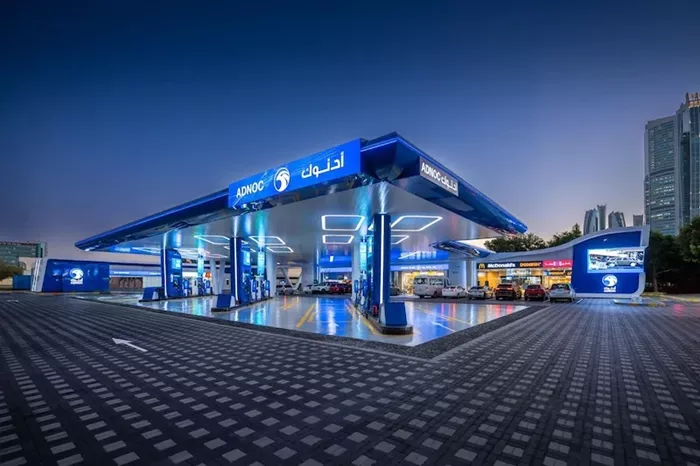Abu Dhabi National Oil Co. (ADNOC) is intensifying its mergers and acquisitions (M&A) activity, with two high-profile targets in its sights: German chemicals giant Covestro and Austria’s integrated energy firm OMV. While ADNOC’s move on Covestro could offer lucrative returns, its potential acquisition of OMV highlights the growing importance of natural gas, which has seen a recent surge in demand.
In September, ADNOC raised its informal offer for Covestro to €60 per share, valuing the company at $12.6 billion. This bid represents a nearly 30% premium on Covestro’s current share price, continuing ADNOC’s interest in diversifying into the petrochemical sector. ADNOC previously increased its offer to €57 per share in July, although no final decision has been reached.
Alongside the Covestro pursuit, ADNOC is also eyeing a merger with OMV. The proposed deal, if successful, could form a $30 billion energy powerhouse. The timing of this move aligns with OMV’s recent announcement of a significant natural gas discovery in the Norwegian Sea. On Friday, OMV revealed that its drilling operations in the Haydn/Monn exploration area yielded recoverable natural gas reserves of up to 140 million barrels of oil equivalent (boe). This deepwater discovery, located 300 km off the Norwegian coast, highlights the growing potential of natural gas reserves in Europe’s energy mix.
The natural gas market has seen a dramatic rebound, fueled by surging LNG exports and increased electricity demand. According to Morgan Stanley, natural gas markets are entering a new cycle of demand growth, driven by rising exports and cold weather forecasts that are expected to spike heating demand. Prices for European natural gas futures recently surged above €48.2 per megawatt-hour, nearing their highest levels in a year.
In contrast, the petrochemical sector faces a much tougher environment. Covestro, for instance, reported a 21% year-on-year decline in second-quarter revenues, primarily due to a slowdown in consumer demand and an oversupply of production capacity. The company’s struggles are mirrored across the industry, with major oil and gas companies facing similar challenges. The industry downturn has prompted some analysts to warn that the petrochemical sector is entering a “Lehman 2” moment—a reference to the 2008 financial crisis that upended global markets.
Despite the downturn, major oil players are betting on petrochemicals as a long-term hedge. As demand for traditional fossil fuels like gasoline and diesel begins to peak, petrochemicals—key components in plastics, polyester, and various everyday products—are expected to remain a vital part of the energy landscape. ExxonMobil, for instance, plans to invest over $20 billion in expanding plastic production over the next three years. Other chemical giants, including Dow and CPChem, are following suit with multibillion-dollar investment plans aimed at bolstering their petrochemical production capabilities.
A significant portion of these investments is flowing into China, where petrochemical demand continues to rise. The International Energy Agency (IEA) reports that China now consumes approximately 6.7 million barrels per day (bpd) of oil for petrochemical production, accounting for 6.5% of global oil demand. Between 2019 and 2024, China’s production capacity for key chemical feedstocks like ethylene and propylene is set to surpass the combined capacities of Europe, Japan, and South Korea. The growing demand for synthetic fibers, such as those used in the production of clothing, is also driving China’s increasing reliance on oil-based chemicals.
Ironically, petrochemicals are also becoming essential to the global green energy transition. Electric vehicles (EVs), which use more thermoplastics and other petrochemical-based materials than traditional internal combustion engine vehicles, are boosting demand for chemical products. According to David Yankovitz, U.S. chemical practice leader at Deloitte, about three-quarters of emissions-reduction technologies require chemicals, many of which are derived from oil. This demand is being met by both the U.S. shale oil boom and Chinese refining capabilities.
ExxonMobil is actively expanding its petrochemical presence in China, with plans to build a new complex in Guangdong province focused on producing performance polymers. Similarly, Saudi Aramco has invested in China’s petrochemical industry, acquiring a 10% stake in Rongsheng Petrochemical and exploring further investments in Hengli Petrochemical.
In an increasingly complex energy landscape, ADNOC’s strategic focus on both natural gas and petrochemicals signals its commitment to staying competitive in the face of global shifts in energy demand and supply. While the company’s interests in OMV and Covestro offer distinct opportunities, they also reflect a broader trend of oil majors diversifying their portfolios to secure long-term growth.
Related topic:
What Is Natural Gasoline? [Revealed]

